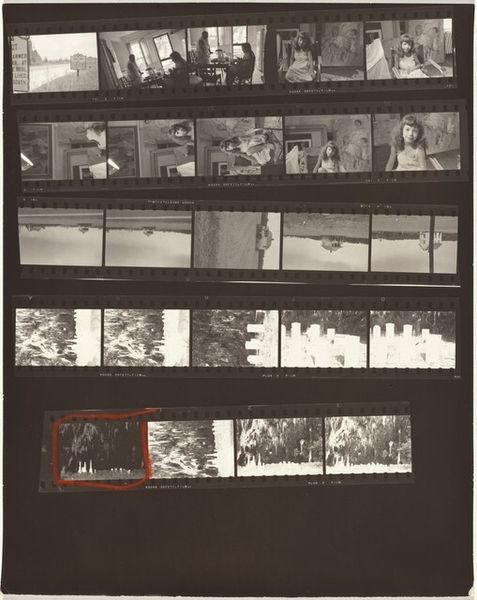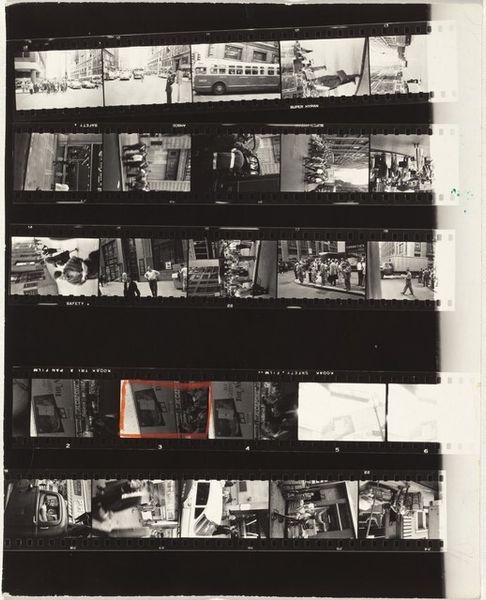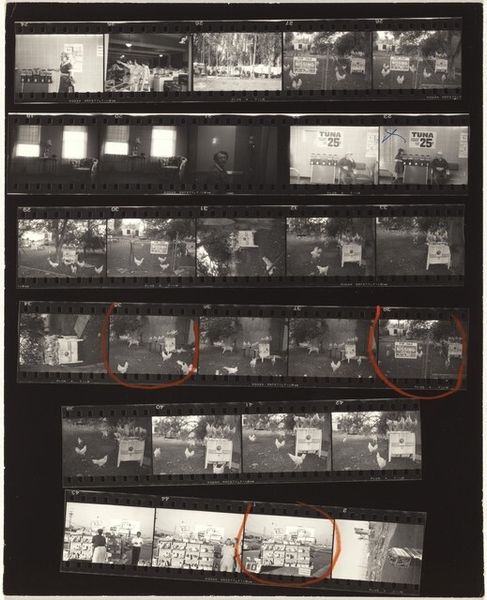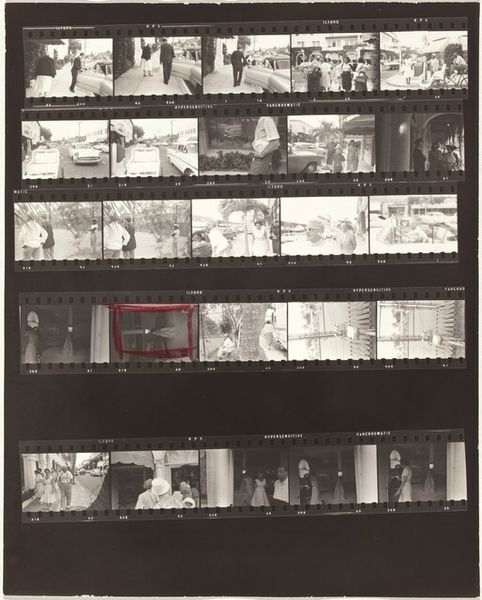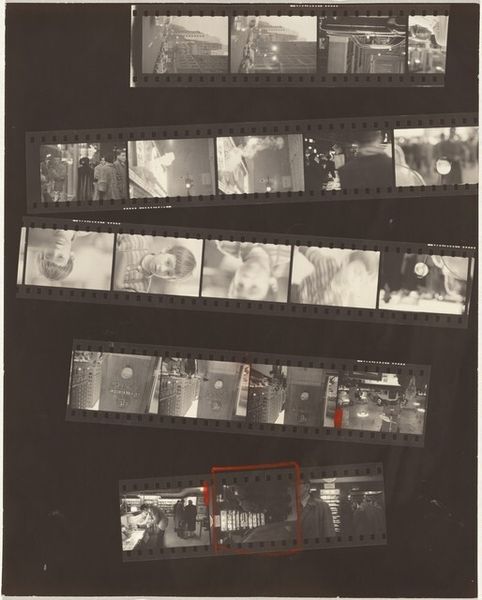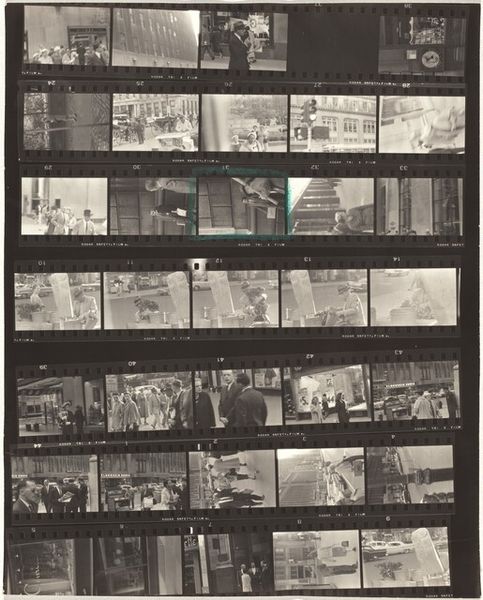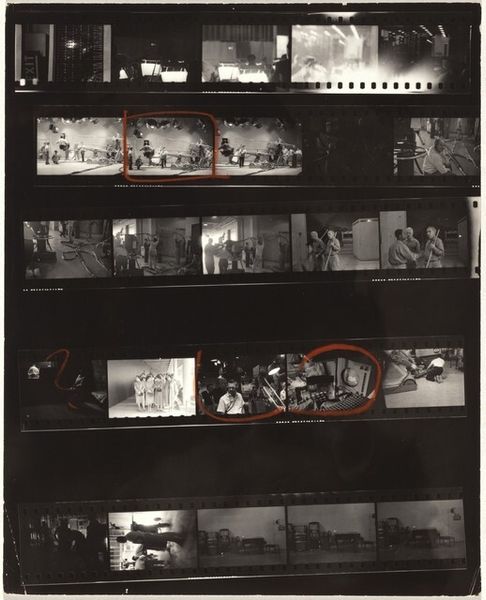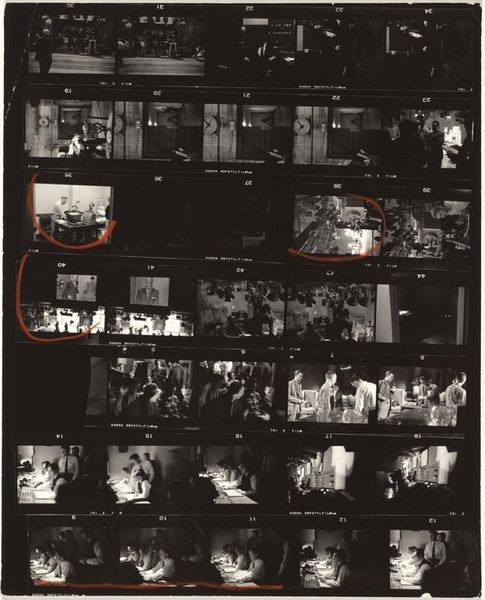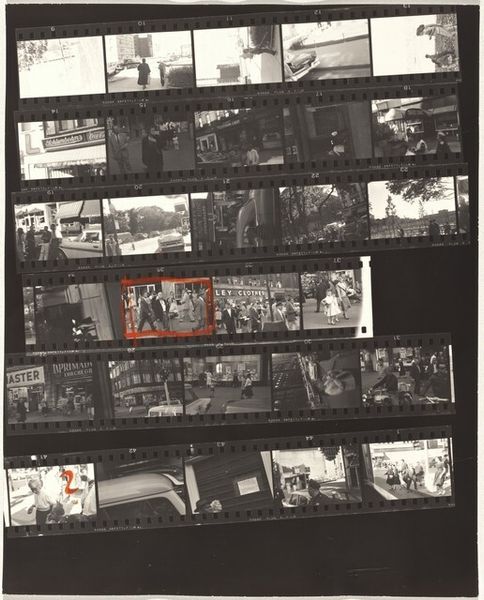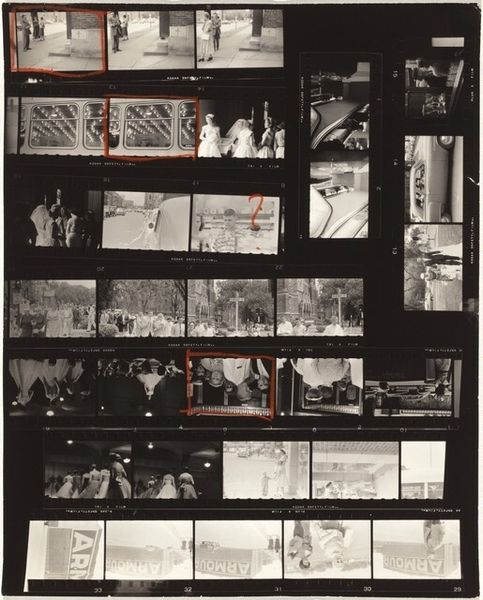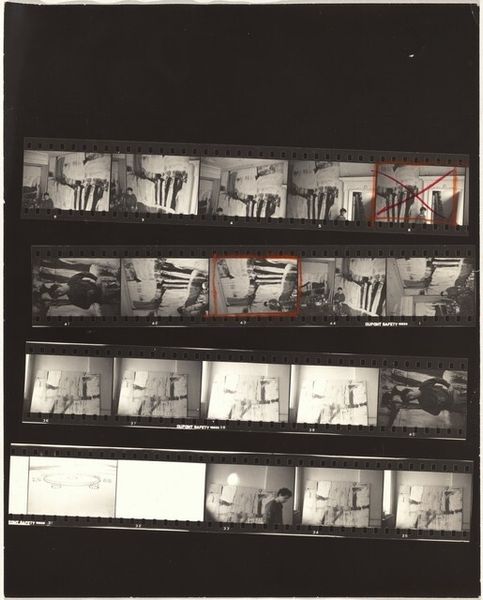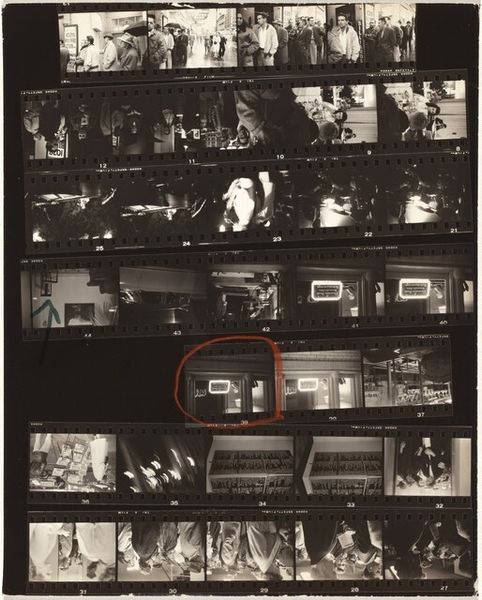
contact-print, photography
#
film photography
#
contact-print
#
street-photography
#
photography
#
culture event photography
#
film
Dimensions: overall: 25.2 x 20.2 cm (9 15/16 x 7 15/16 in.)
Copyright: National Gallery of Art: CC0 1.0
Editor: This is Robert Frank’s “Hollywood 65,” a contact print made in 1958. The contact sheet aesthetic really strikes me. What's so compelling about seeing the raw materials, the process itself, on display like this? Curator: It's precisely that unveiling that’s crucial. Frank’s choice to present the contact sheet collapses the distance between the artist's labor and the final product. It’s a deconstruction of the mystique surrounding photography, emphasizing its industrial nature. Look at the varying exposures, the handwritten annotations, even the red markings. They reveal the choices, the edits, the deliberate actions involved in shaping the narrative. Editor: So it’s about stripping away the illusion, revealing the means of production? Curator: Exactly. And in doing so, Frank implicitly comments on the subject matter too – Hollywood. By showing the selection process, aren’t we also seeing a critique of the constructed reality, the manufactured images, that Hollywood itself produces and consumes? Think about the social context. Post-war America was grappling with its own image, its own narrative. Frank, an outsider, uses this very material, this contact sheet, to question that narrative’s construction. What impact does such visual syntax have in revealing its processes? Editor: It’s fascinating to consider the labor involved in crafting these images, and then how that labor is directly presented to the viewer. It blurs the line between the artistic vision and the actual material effort. Curator: Precisely. And where does that blurring leave our understanding of what “art” is and can be? Editor: I hadn’t considered how revealing the process also critiques the subject matter. Seeing the raw process changes how I look at Frank's work. Curator: And perhaps how we look at Hollywood too. The contact sheet becomes a site of critical engagement.
Comments
No comments
Be the first to comment and join the conversation on the ultimate creative platform.

